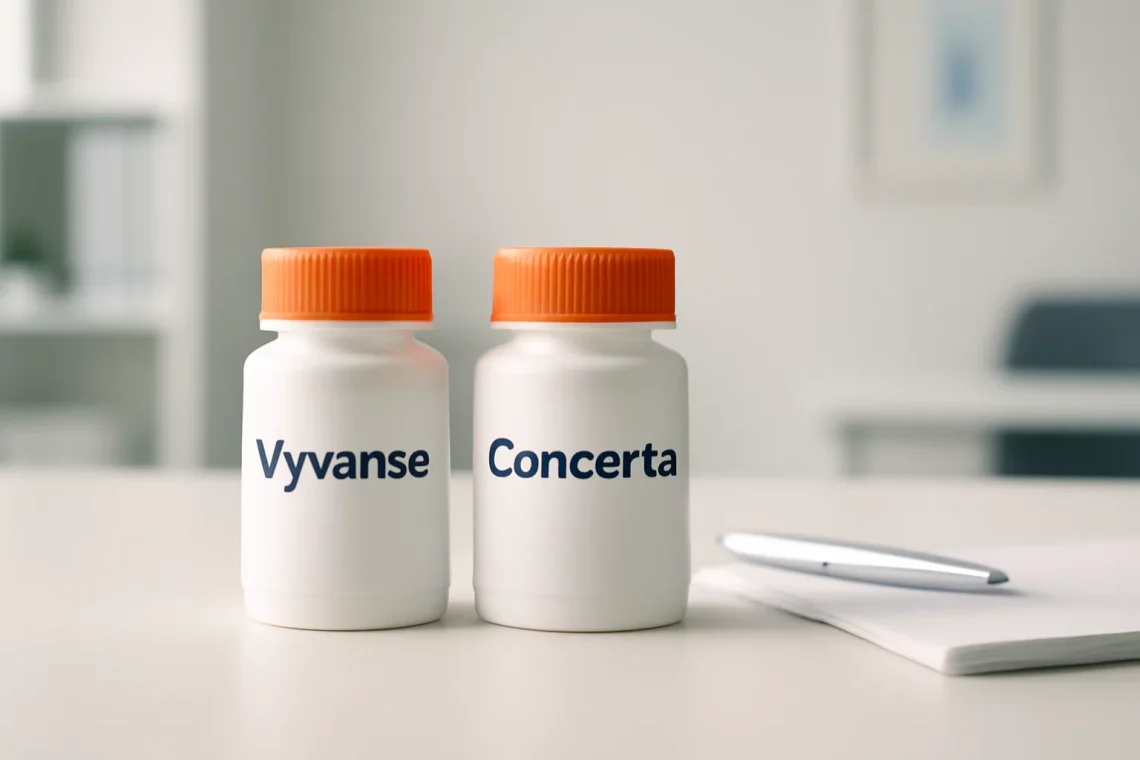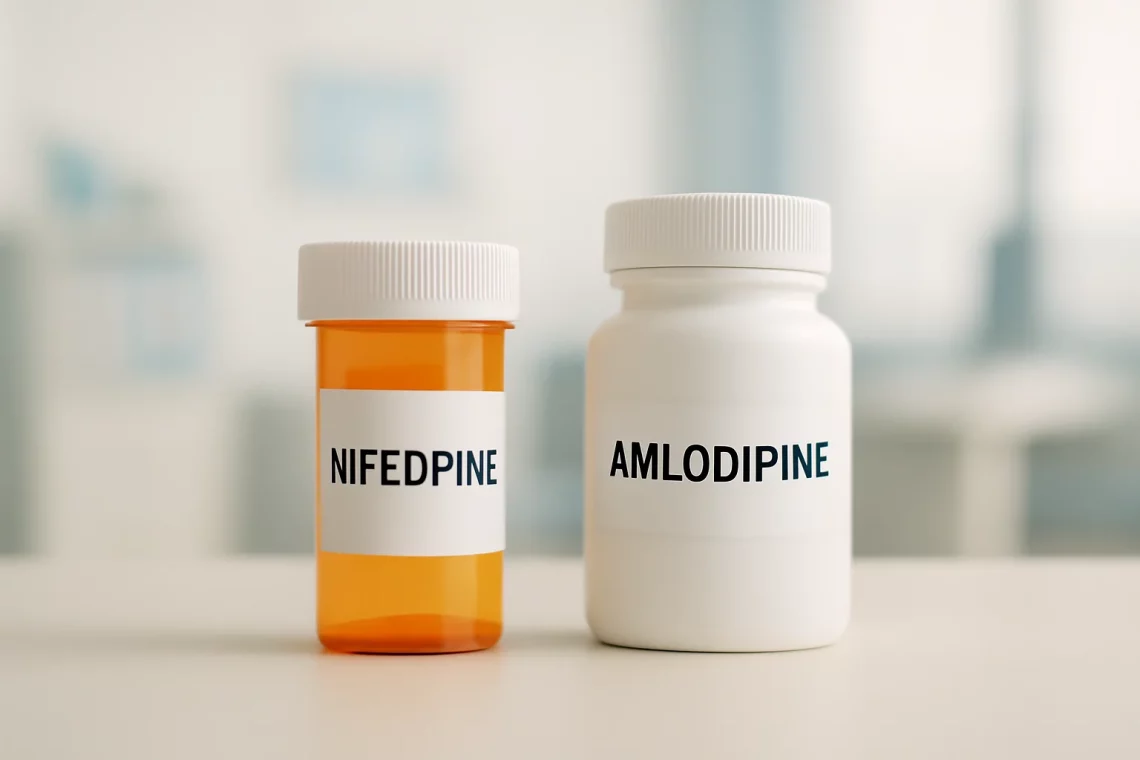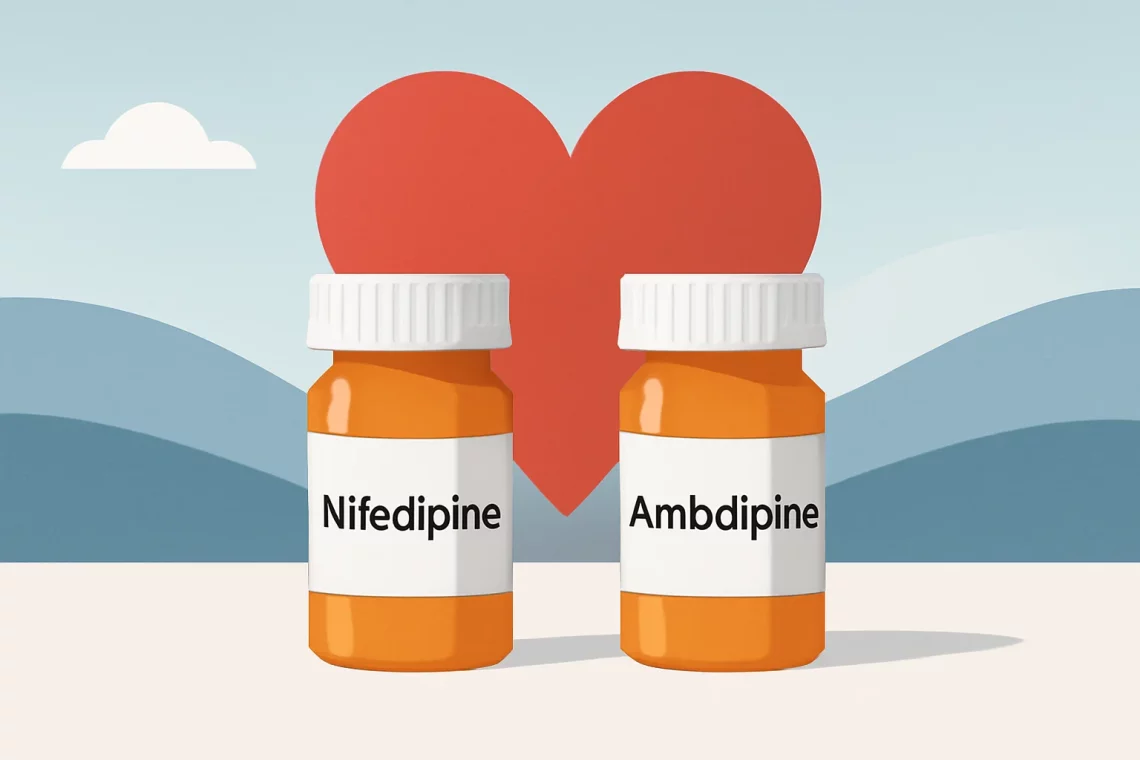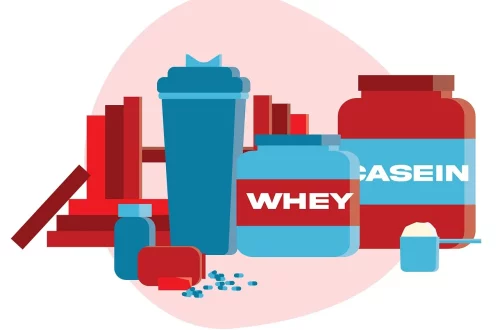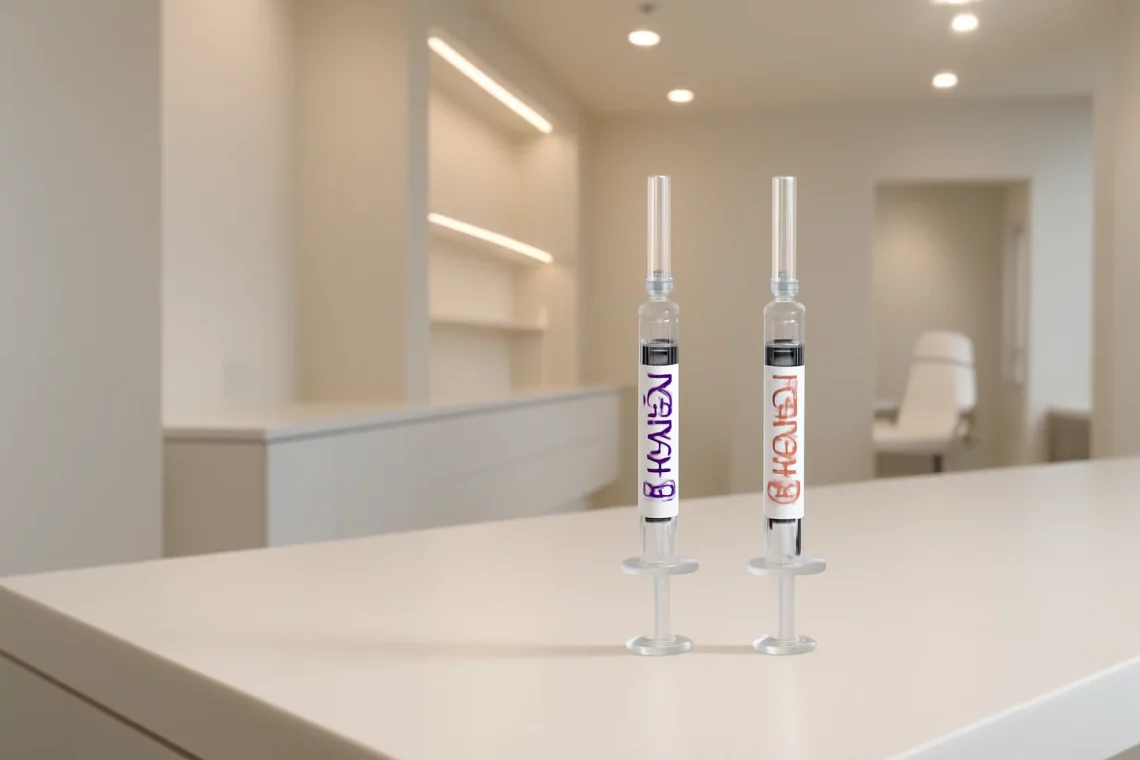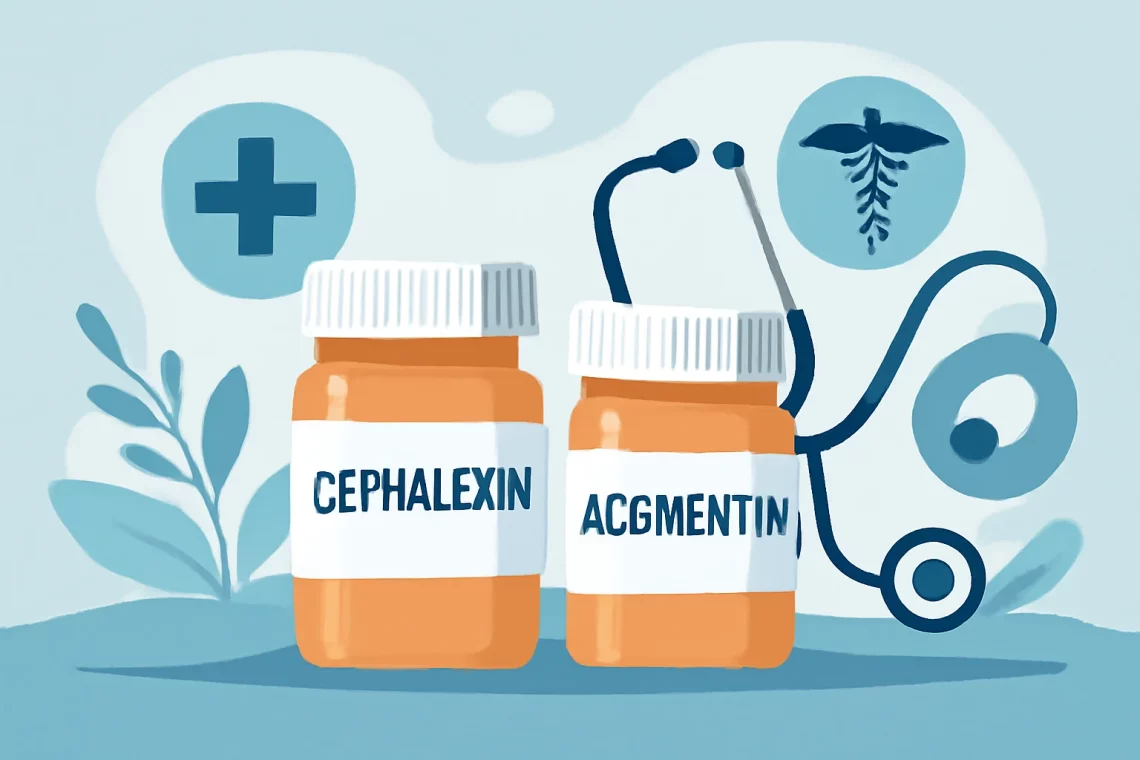-
Vyvanse vs Concerta: Choosing the Right ADHD Medication for You
Vyvanse and Concerta are two of the most commonly prescribed medications for the treatment of Attention Deficit Hyperactivity Disorder (ADHD). Both medications play a crucial role in helping individuals manage their symptoms, enhancing focus, and improving overall quality of life. However, the choice between Vyvanse and Concerta can be daunting for patients and their families, as each medication has its unique properties, benefits, and potential side effects. In recent years, there has been increasing awareness about ADHD, leading to more diagnoses and subsequent treatment options. While the effectiveness of medication is often highlighted, it’s essential to consider the individual needs of each patient. Factors such as age, lifestyle, and medical…
-
Lyrica vs Amitriptyline: Comparing Benefits and Side Effects
Lyrica and Amitriptyline are two medications that are often discussed in the context of managing chronic pain, anxiety, and various neurological conditions. While both drugs share some similarities in their therapeutic uses, they operate through different mechanisms and can have distinct side effects. Understanding these differences is crucial for patients and healthcare professionals alike, as the choice between Lyrica and Amitriptyline can significantly impact treatment outcomes. Lyrica, also known by its generic name pregabalin, is primarily used to treat neuropathic pain, fibromyalgia, and certain types of seizures. It works by modulating the release of neurotransmitters in the brain, which helps to reduce pain and improve mood. On the other hand,…
-
Nifedipine vs Amlodipine: Which is Better for Blood Pressure Management?
Nifedipine and amlodipine are both medications that belong to the class of calcium channel blockers, which are primarily used in the treatment of hypertension and angina. These drugs work by inhibiting the influx of calcium ions into the smooth muscle cells of the heart and blood vessels, leading to vasodilation and a subsequent decrease in blood pressure. As cardiovascular diseases continue to be a significant concern worldwide, understanding the nuances between these two medications can empower patients and healthcare providers to make informed decisions regarding treatment options. The choice between nifedipine and amlodipine may depend on various factors, including the specific health conditions of the patient, their medical history, and…
-
Nifedipine vs Amlodipine: Which Medication is Right for You?
High blood pressure and certain heart conditions are prevalent health issues that affect millions of individuals worldwide. As the demand for effective treatments grows, various medications have been developed to help manage these conditions. Among them, calcium channel blockers have gained prominence for their ability to relax blood vessels and improve blood flow. Two widely used medications in this category are nifedipine and amlodipine. Both drugs are effective in lowering blood pressure and are often prescribed to patients dealing with hypertension or angina. Despite their similarities, nifedipine and amlodipine have distinct properties, mechanisms of action, and side effect profiles that can influence a healthcare provider’s choice in prescribing one over…
-
Botox vs Jeuveau: Which Injectable Is Right for You?
Botox and Jeuveau have emerged as two of the most popular cosmetic treatments for reducing the appearance of fine lines and wrinkles. As the demand for non-surgical aesthetic procedures continues to rise, individuals seeking youthful, vibrant skin often find themselves weighing the merits of these two options. Both treatments are designed to temporarily relax the facial muscles, leading to a smoother complexion, but they differ in formulation, application, and potential results. Understanding the nuances between Botox and Jeuveau is essential for anyone considering these treatments. Factors such as cost, duration of effects, and individual skin types can significantly influence a person’s choice. Furthermore, as the aesthetic landscape evolves, new alternatives…
-
Furosemide vs Bumetanide: Which Diuretic is Right for You?
Furosemide and bumetanide are two medications belonging to the class of diuretics, commonly referred to as “water pills.” These drugs play a pivotal role in managing fluid retention and hypertension, conditions that can lead to more severe health issues if left unattended. While both are effective in their respective uses, they have distinct characteristics that can influence a healthcare provider’s choice based on individual patient needs. Diuretics work by promoting the excretion of sodium and water from the body, thereby reducing blood volume and, consequently, blood pressure. This mechanism is particularly beneficial for patients suffering from conditions such as congestive heart failure, liver cirrhosis, and kidney disorders. Despite their similarities,…
-
Plan B vs My Way: Finding Your Path to Success and Fulfillment
In life, the choices we make shape our journey, influencing not only our immediate circumstances but also our long-term outcomes. The concept of having a “Plan B” versus adhering strictly to “My Way” reflects a fundamental philosophical debate about risk, adaptability, and commitment. On one hand, a Plan B represents a safety net, a contingency strategy that provides an alternative route when the primary path encounters obstacles. On the other hand, “My Way” embodies a determined approach, emphasizing personal conviction and a steadfast commitment to one’s original goals. This dichotomy often surfaces in various aspects of life, from career decisions to personal relationships, and even in creative pursuits. The tension…
-
Cephalexin vs Augmentin: Key Differences and Uses Explained
The world of antibiotics is vast and complex, often leaving patients and healthcare professionals with challenging choices. Among the many antibiotics available, Cephalexin and Augmentin are two commonly prescribed medications. Both belong to different classes of antibiotics and are utilized to combat bacterial infections, but they differ significantly in their mechanisms, uses, and effectiveness. Understanding these differences is crucial for making informed decisions regarding treatment options. Cephalexin is a first-generation cephalosporin antibiotic, known for its efficacy against a variety of gram-positive bacteria. It works by disrupting the synthesis of the bacterial cell wall, ultimately leading to cell death. On the other hand, Augmentin is a combination antibiotic that contains amoxicillin…
-
Amoxicillin vs Clindamycin: Comparing Antibiotics for Effective Treatment
In recent years, the importance of understanding antibiotics has grown significantly among the general public. With the rise of antibiotic resistance and the increasing prevalence of bacterial infections, it is essential to be informed about the various treatment options available. Among these options, Amoxicillin and Clindamycin are two commonly prescribed antibiotics that serve different purposes and have distinct mechanisms of action. Both drugs are used to combat bacterial infections, but they vary in their effectiveness against specific types of bacteria and conditions. This knowledge is crucial not only for healthcare professionals but also for patients who want to make informed decisions about their treatment. The conversation around antibiotics often delves…
-
Plan B vs Option 2: Choosing the Best Path Forward
In today’s fast-paced world, the concept of having a backup plan is more relevant than ever. Whether in personal life, business, or any other endeavor, uncertainty is a constant companion. The unexpected can disrupt meticulously laid plans, necessitating the need for alternatives. This is where the ideas of “Plan B” and “Option 2” come into play. Both terms are commonly used to signify alternatives to primary choices, yet they carry different connotations and implications. Understanding the nuances between these concepts can significantly impact decision-making processes. A well-thought-out plan can mitigate risks and safeguard against potential failures, while a backup option can provide a safety net when things go awry. As…
